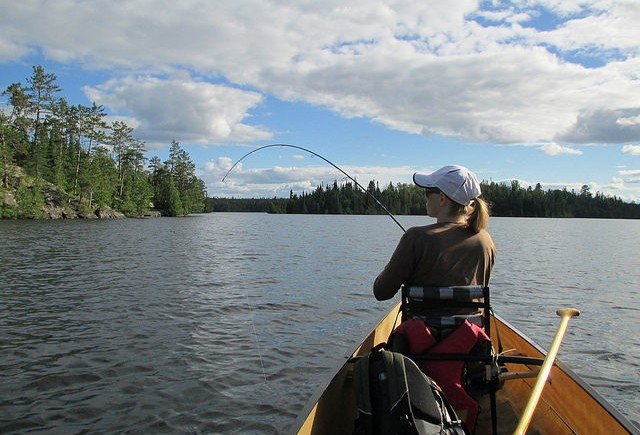It seems easy. The fish bites, you tug; then you reel the fish in. No problem.
Not so fast.
Setting the hook is a matter of timing and feel. If done incorrectly, you can easily lose a fish. Following some important guidelines on how to set the hook will have you catching more fish this season.
Waiting
This might be the most difficult step to master when it comes to setting the hook, especially when fishing top water. Whether you are fishing top-water lures for bass or dry flies for trout, when you see the splash of the fish going after the bait, the initial response it to pull.
Many times, however, the fish has not completely taken the bait, at this point. The best strategy when you see the splash is to wait a split second, a count of one, before trying to set the hook. This will ensure the fish has the bait in its mouth and you have a better chance of hooking it.
The waiting game becomes a bit tricky when dealing with certain species of fish. The walleye is a good example. In many cases, a walleye inhales a bait and it takes a few seconds before the bait is actually in its mouth. This is especially true with live bait. In this case, when you detect a walleye going after your bait, the best strategy is to count to three or four; then set the hook.
Be ready
It seems elementary, but you always need to be ready to set the hook. Yet, there are often times when anglers are not ready. Good examples are when you are turned around talking to your buddy, or when you have been fishing for 30 minutes without a bite and you let your guard down.
Always be ready, because you never know when a fish is going to bite. Ready means having your feet shoulder width apart to provide stability. Elbows should be close to your body. This provides more leverage and strength when setting the hook.
Hook set
Yanking the line when you get a bite seems easy, but there is a proper way to set the hook. Some of the most important steps in the process occur before you give the line a tug.
One key step when you get a bite is to make sure you reel in any slack line, before you try to set the hook. If there is too much slack, your hook set will be much less powerful and you will likely miss the fish. Slack line is usually not an issue if you are reeling in a lure and a fish hammers it, but it is still important to keep in mind.
Once you have reeled in the slack, point the rod tip toward the fish; then snap the rod tip back, either toward your shoulder or to the side. Once you snap the rod, begin reeling. This is important too, because it helps ensure the fish gets hooked. From this point, keep constant pressure on the fish and reel it toward you.
Photo credit: Flickr CC








